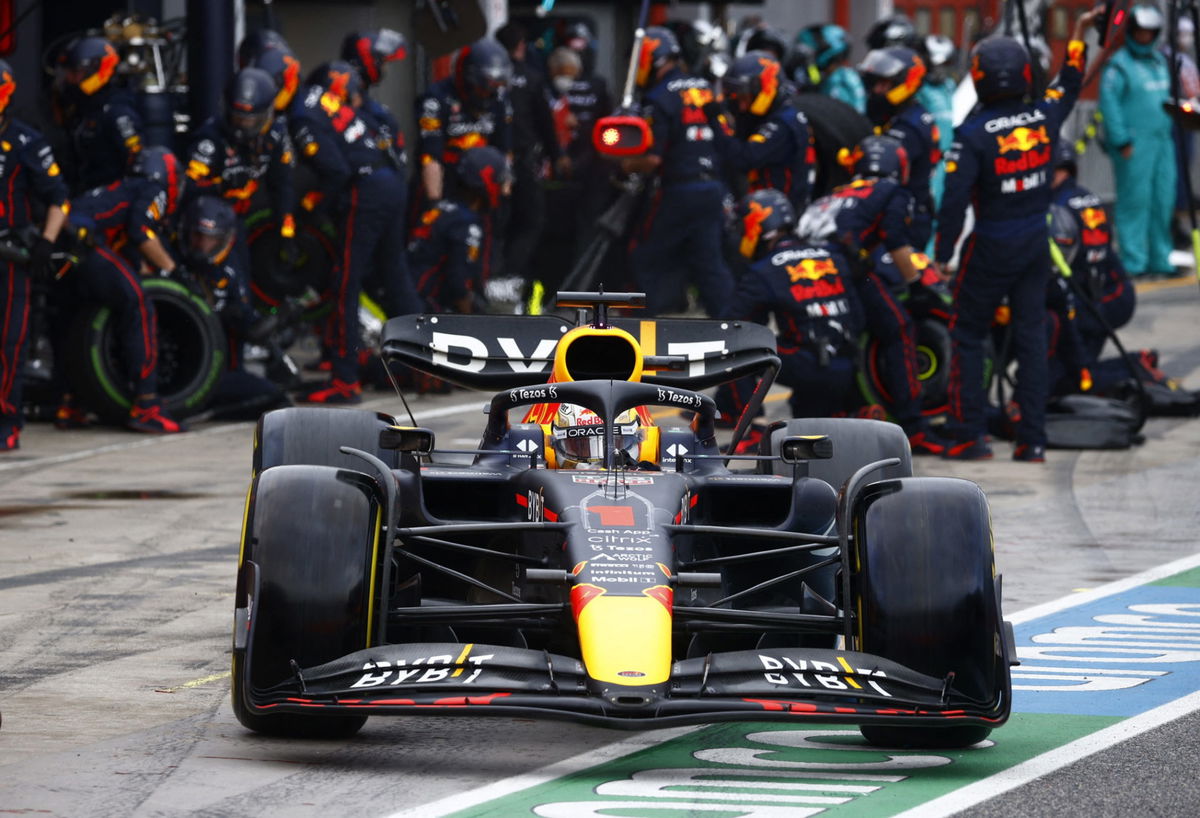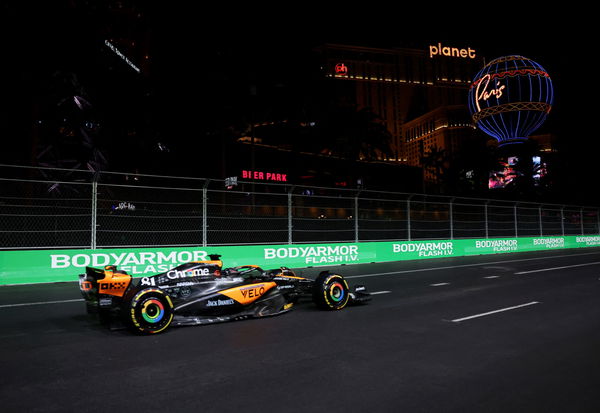
Reuters
Formula One F1 – Emilia Romagna Grand Prix – Autodromo Enzo e Dino Ferrari, Imola, Italy – April 24, 2022 Red Bull’s Max Verstappen in the pit lane during the race REUTERS/Guglielmo Mangiapane/Pool

Reuters
Formula One F1 – Emilia Romagna Grand Prix – Autodromo Enzo e Dino Ferrari, Imola, Italy – April 24, 2022 Red Bull’s Max Verstappen in the pit lane during the race REUTERS/Guglielmo Mangiapane/Pool
It’s the day after Christmas, and the different teams should be working on developing their new cars for the next season, right? As it turns out, that’s not the case. At least not from this year, as all the F1 teams have agreed to a mandatory shutdown of all factories from December 24th till they resume work on the 2nd of January. They are not allowed to work during these nine days. That begs the question: What happens behind the scenes?
Watch What’s Trending Now!
What is the timeline like for Formula One teams to develop their cars for the next season? Do they wait till the end of the season, or do they start earlier? What happens during the three-odd months they get away from all the racing action? Let’s find out.
ADVERTISEMENT
What happens after the F1 season finale?
After the season finale, the cars are taken out for one last testing session. On November 28th this year, the drivers took the cars out for one last spin, and considering that testing time is limited, these sessions are extremely valuable. “Why, though?” you may ask, “The cars will not be used again, so what could the teams gain from this?”

Reuters
Formula One F1 – Las Vegas Grand Prix – Las Vegas Strip Circuit, Las Vegas, Nevada, U.S – November 17, 2023 McLaren’s Oscar Piastri in action during practice REUTERS/Finn Blake
The answer to this question is two-fold. Firstly, not all 20 drivers take part in this test. Each team is required to assign one of the cars to an up-and-coming driver who has no more than two Grand Prix starts, allowing them an opportunity to take the pinnacle of motorsport’s engineering and technology for a spin (or get used to it further). The other car is for Pirelli tire testing to benefit both F1 and the teams. It helps give F1 greater insight into the compounds and how to improve for the next season.
ADVERTISEMENT
After this testing, they pull apart every single component and keep only the chassis. If you’re a customer team, for instance, you will have to return the engine to the manufacturers, as the lease ends at the end of the season. After that, the cars go into storage and cannot be fired up again for at least the next two years, after which they can be used for showruns. Some cars make it to a museum, some to a super secret storage facility like McLaren, and some others even make it to the drivers. The car is now, for all intents and purposes, officially retired. The following season begins with new cars.
Read more: How Is Lewis Hamilton’s Driving Style Radically Different from Max Verstappen’s?
ADVERTISEMENT
But when do F1 teams make these new cars? To answer that question, we must understand the timeline for building an F1 car.
Development of an F1 car, from start to finish
Here’s a surprise for you. Most teams would have started the development of their 2024 car all the way back in January 2023! Yes, the teams focus more on developing the current season’s car, bringing upgrade packages to the car throughout the season. Despite that, they start working on the next season’s car much earlier than most people think.
ADVERTISEMENT
ADVERTISEMENT
Renault’s former Chassis Director, Nick Chester, said, “You develop the current car until October, but you’ll have started work on the next car back in January. The team is flat out. Permanently.”
Of course, after Abu Dhabi, all the teams can focus entirely on the car for 2024. Usually, these months are reserved for the final phase of putting the car together, getting reliability issues tested and sorted out, and coordinating with marketing for designing liveries, among other things. After Abu Dhabi, the teams have roughly three months to assemble their year-long efforts before the deadline for the first practice session in Bahrain, usually at the end of February.
This season, Red Bull had a big advantage, as drivers in the paddock believe it started focusing 100% of its efforts on the 2024 car way back in August. The new cars, for most teams, will be ready by around the end of December. Even then, the months from December to February are usually the most hectic for the factories.
December to February: The winter break developments
December is usually the time when teams go through a different series of regulation checks and tests to ensure that the cars they’ve built are fit for racing. Mercedes, for instance, finished building the 2023 car even before Christmas last year. Rob Thomas, the COO of Mercedes AMG Petronas F1 team, revealed,
“[In December and January], we have been through the homologation of the chassis. These are the series of tests we have to pass before we can go racing. And then we were into a lot of T&D (testing and development) tests, first into the component level and then the build-up to the major assemblies of the car to make sure we hit all the performance and reliability targets.”
January is usually the single busiest month for the building team, as the focus here would be to ensure that they have enough quantity now that they’ve completed testing. February is then focused entirely on the pre-season testing, identifying the proper setups, making sure that the right liveries are painted in, and ensuring any final missing pieces are completed and shipped off to the first race in Bahrain.
The development does not stop there. The teams will consistently notice areas to improve and focus on developing the cars throughout the season to maximize the car’s potential. However, these additions are subject to a lot of regulations, and only certain parts can be modified or changed.
What are your thoughts on how Formula 1 teams go about their car development for an upcoming season? Let us know in the comments below.
Watch this Story: Lewis Hamilton: Ranking His F1 World Titles From 2008 to 2020
ADVERTISEMENT
ADVERTISEMENT
ADVERTISEMENT

